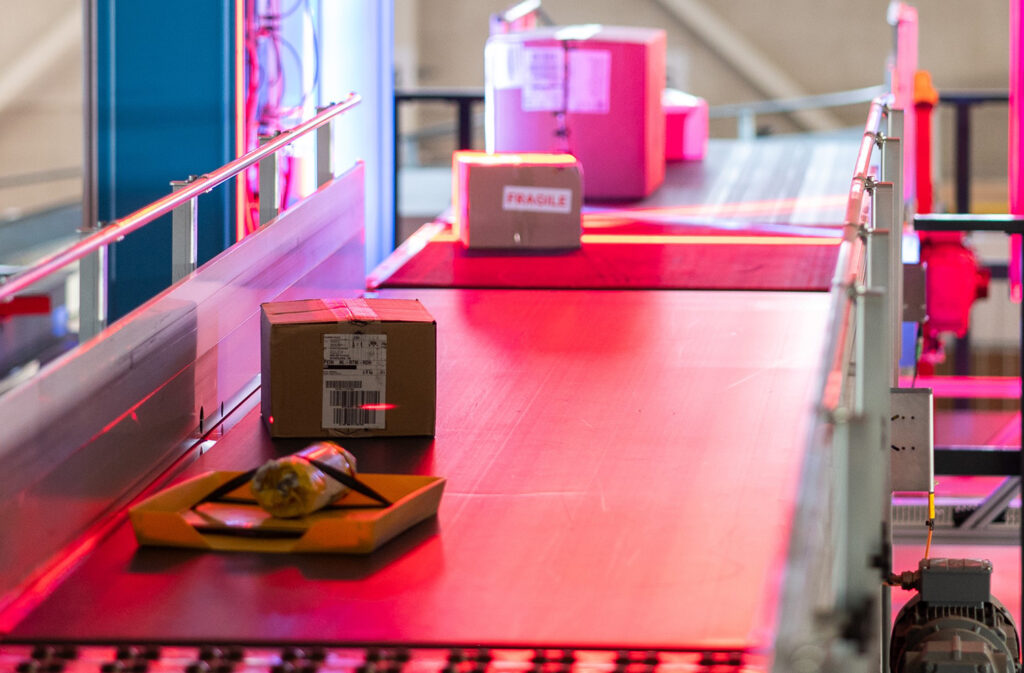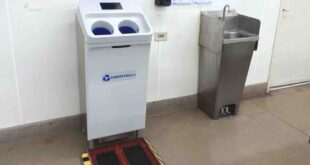Mathijs Baron and Feifei Huo look at how character recognition (OCR) powered by artificial intelligence (AI) helps to bring label read rates closer to 100%
For any inbound or outbound warehouse logistics process, efficiency and profitability rely on moving items to the correct destination in a minimal amount of time. Labels help achieve this, but what if they cannot be read? In the past, manual intervention following a ‘no-read’ was inevitable. However, optical character recognition (OCR) powered by artificial intelligence (AI) provides a modern, automated solution.
There is a lot of data contained on a label, like addresses, barcodes, expiration dates, dates of production, stock-keeping unit (SKU) numbers, batch codes and more. Depending on a warehouse operation, all of this information is potentially critical for the sorting process.
Labels are usually read when items pass through camera tunnels as part of a checking procedure, providing actionable information such as where the item needs to go, as well as other crucial data for the logistics process. However, expecting a perfect read every time is unrealistic. Labels can be obscured or damaged, which results in a ‘no-read’. While these may constitute a minority, in a high-volume warehouse operation, they stack up quickly.
Until recently, a label no-read usually resulted in a slow, costly manual intervention to move the item back onto the right path. OCR provides a solution. By enhancing imagery from cameras and harnessing customer information to reconstruct and identify key data strings on damaged or obscured labels, the technology dramatically improves read rates. Furthermore, it can achieve this fast enough for a fully automated process.
Deep learning improves read rates
Prime Vision has developed its OCR technology since it started reading damaged labels for postal services 20 years ago. Its current Text Vision solution differentiates itself with the innovative use of deep learning AI. Whereas many OCR solutions will bring read rates up to 95% or so, Text Vision can push this up to 98 or 99% in real-world applications.
Text Vision operates by taking images of labels, enhancing them in pre-processing, and then finding the appropriate text block or data string that needs to be read. Text is then extracted and assessed by AI, which uses logic to find the best result. Following this reasoning, a successful read is achieved, enabling a relevant action to be taken without interrupting the automation process.
To make this possible, the AI must be trained through deep learning to identify the correct region of interest containing the relevant field or data string on the label. The system is taught using real-world examples of customer labels, so it focuses on the right area. AI can also cross-reference extracted information with databases to help with reconstruction. Ultimately, OCR can be optimised to each operation, ensuring that it is applicable to any automatic sorting system.

In the fast lane
While reducing no-reads is important for large logistics operations, as with any warehouse process, the efficiency of the system is vital. The key principles are to read more, read faster and make fewer errors. Prime Vision approaches these challenges with a dedicated research and innovation team that actively experiments and tests the latest technology to unlock new levels of OCR performance.
Identifying barcodes can be achieved quickly with existing scanning hardware, but to reduce OCR computation times, Prime Vision recommends a dedicated GPU processor. The faster processing speeds mean that even if an item suffers a no-read, it can be solved in such a short timeframe that no manual intervention is required. Instead, the system can respond automatically, seamlessly moving the item onto the next stage of the process in a quick and cost-effective manner.
Worthy of the label
With its inherent speed and reduction of no-reads, OCR is incredibly valuable for high-volume logistics. During peak periods, it saves time and money by greatly reducing manual intervention. The AI technology powering Text Vision allows OCR to be further optimised, eating into the last 5% of complex label no-reads to provide a proportionately larger benefit to high-volume operations.
To compound this, Text Vision is designed for versatility. Specially attuned to meet different data strings, regions of interest and accuracy requirements, Text Vision has the adaptability to improve the throughput and efficiency of any operation, regardless of complexity
Mathijs Baron is International Sales & Business Development, and Feifei Huo, R&D Engineer at Prime Vision.
 Engineer News Network The ultimate online news and information resource for today’s engineer
Engineer News Network The ultimate online news and information resource for today’s engineer



